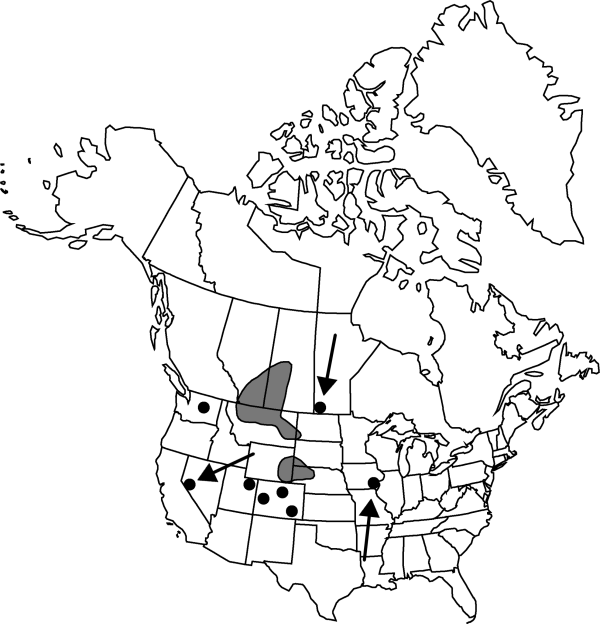Chenopodium subglabrum
Bot. Gaz. 34: 362. 1902.
Stems erect or semierect, branched, 1–5.5 dm, glabrous or sparsely farinose. Leaves nonaromatic; petiole to 1 cm; blade linear, 1-veined, 1–3 (–5) × 0.1–0.2 (–0.4) cm, somewhat fleshy, base cuneate, margins entire, apex acute to acuminate, glabrous. Inflorescences glomerules in terminal and axillary panicles, 6–25 × 5–20 cm, widely spaced, maturing at different times; bracts variable. Flowers: perianth segments 5, connate into 0.3–0.4 mm tube; lobes ovate or orbicular-obovate, 1–1.4 mm, apex obtuse or rounded, cucullate, carinate, sparsely farinose, largely covering fruit at maturity; stamens 5; stigmas 2, 0.1 mm. Achenes ovoid; pericarp nonadherent, smooth. Seeds ovoid, 1.2–1.6 mm diam., margins obtuse with narrow rim; seed-coat black, smooth, shiny. 2n = 18.
Phenology: Fruiting mid summer–fall.
Habitat: Sandy areas, particularly sand bars in rivers and in sandy blowouts near river banks
Elevation: 400-1400 m
Distribution

Alta., Man., Sask., Colo., Iowa, Mont., Nebr., Nev., N.Dak., S.Dak., Utah, Wash., Wyo.
Discussion
Selected References
None.
Lower Taxa
"narrower" is not a number."dm" is not declared as a valid unit of measurement for this property.